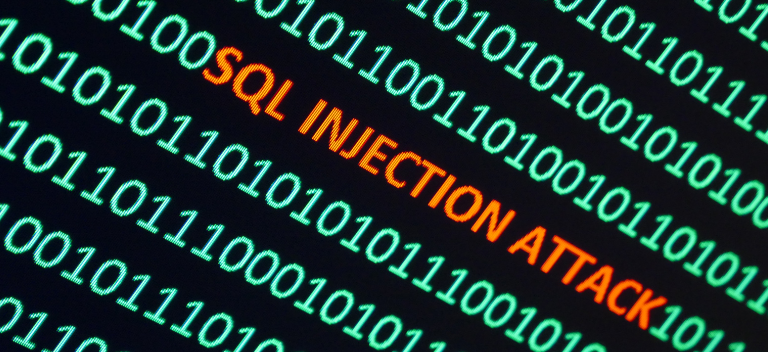
BLOG

Navigating the 2024 cybersecurity frontier: Key trends to watch
As we enter the new year, the cybersecurity landscape is facing pivotal transformations. For example, the increasing frequency and complexity of cyber threats, like phishing with deepfakes, are pushing the boundaries of traditional security frameworks. Grasping these emerging threats is crucial for organizations in this changing digital world.
The critical nature of the changing cybersecurity landscape is highlighted by the expected economic repercussions of these threats. To put it into perspective, by the end of 2025, cyber attacks are expected to cost the global economy a staggering $10.5 trillion. A massive number – if cybercrime were a country, it would be the third-largest economy in the world, right after the U.S. and China.
For companies operating predominantly online, in industries such as in banking or gambling, this escalating cybersecurity battle is particularly critical. These companies handle sensitive user information and large financial transactions daily, making them attractive targets for cybercriminals.
That is why employing robust cybersecurity measures is a must, maintaining the trust and safety of their users, and of course their business’s credibility and success.
Looking ahead to 2024, we’re gearing up for new challenges and we must stay one step ahead of the game. Here are our predictions for key cybersecurity trends in 2024.
Cloud Service Attacks
One of the big areas for concern for the coming year is attacks on cloud services. The shift to cloud computing has provided businesses with faster operations and cost savings. In fact, management consulting company Gartner predicts a 20.7% increase in cloud service spending in 2024, reaching around $600 billion.
But with great power comes great responsibility, and the cloud is no exception. We’re talking about risks like less control over your data, disorganized cloud storage settings, weak cloud apps, data that doesn’t quite delete completely, and all those tricky compliance and migration issues. It’s a whole new battlefield, and businesses will have their work cut out for them, making sure their data stays safe from these cloud threats.
Key practices to protect cloud infrastructure against evolving security challenges include implementing granular identity and access management (IAM) based on a policy-driven, role-based approach with a zero-trust model.
It’s also vital to establish regular security audits and robust data backup and recovery plans, ensuring organizational resilience against data breaches. Meanwhile, proactive system monitoring through tools like vulnerability scanners and real-time security event monitoring through a 24/7 SOC is essential for early threat detection and response. Above all else, securing data through encryption and deploying web application firewalls are critical for protecting sensitive information and cloud-based applications.
AI and ML Integration
Artificial Intelligence (AI) and Machine Learning (ML) technologies are transforming cybersecurity. They empower systems to process large data volumes, spot patterns, and quickly detect anomalies, transforming threat detection and prevention.
For online gambling companies, this advancement is key. Leveraging AI and ML, they’re enhancing their cybersecurity to tackle rising threats. For example, this approach can detect anomalies in network traffic and user behaviors to provide instant threat identification, helping to ensure the safety of players and transactions.
It’s also pivotal in large-scale fraud prevention and anti-money laundering by scrutinizing extensive data to pinpoint suspicious activities, thereby preserving the company’s integrity and customer trust. Plus, robust cybersecurity in industries such as online gambling is often vital for meeting regulatory demands, maintaining player and regulatory body trust, and reducing legal and financial risks.
Quantum Computing Cybersecurity
Quantum computing is deconstructing how we deal with data and solve tricky problems. Unlike regular computers that work with bits as 0s or 1s, quantum computers use qubits. These qubits, thanks to quantum superposition, can be in several states at once. This lets quantum computers tackle massive data sets and complex problems much faster than traditional computers.
Quantum computing’s growth brings both pros and cons for cybersecurity. Its incredible speed could boost cybersecurity, making encryption stronger and threat detection smarter. It’s also great for handling secure data on a large scale.
But there’s a flip side. Quantum computing could crack current encryption methods like RSA and ECC in no time, putting many security systems at risk. This makes developing quantum-resistant encryption, or post-quantum cryptography, a very important initiative moving forward.
As 2024 unfolds, the cybersecurity world must adapt quickly to leverage quantum computing’s benefits while guarding against its threats. This means updating encryption methods and prepping systems to stand up to quantum technology’s advanced powers.
Cybersecurity Education
As we enter 2024 with rapid technology advancements, the cybersecurity sector is still wrestling with a big challenge: the skills gap. With cyber threats getting trickier, there is huge demand for skilled cybersecurity professionals. This gap is a risk not just to individual companies but to our global cyber-infrastructure as a whole.
To tackle this, there are some initiatives underway. Educational institutions are beefing up their cybersecurity courses, offering degrees and certs that arm students with the latest in cyber defence smarts. These programs are big on practical, hands-on learning, getting students ready for the real deal in cybersecurity.
Also, ongoing learning and professional development are key in a cybersecurity career. There are loads of training programs, workshops, and seminars offered by organizations and industry groups to keep current pros up to speed on the newest cybersecurity trends, tools, and tricks. These programs often focus on specific areas like network security or incident response.
Moreover, we’re seeing more teamwork between the public and private sectors in cybersecurity education. Businesses are teaming up with schools to create training programs that match the industry’s needs. This is great for students, who get spot-on skills for today’s market, and for the industry, which gets a workforce ready to tackle today’s and tomorrow’s cyber challenges.
Blockchain Adaptation
Blockchain technology is gaining traction as a powerful tool for boosting cybersecurity. Known for its decentralized nature, blockchain brings key security features like immutability, transparency, and tamper resistance to the table. These qualities are ideal for securing digital transactions and shielding data from cyber threats.
A major way blockchain is bolstering cybersecurity is by preventing data tampering. Once data is on a blockchain, changing it without network consensus is nearly impossible, thwarting hackers’ attempts to tamper with it. This is especially crucial for protecting sensitive information like personal IDs, financial records, and critical infrastructure data.
Additionally, blockchain is reshaping identity management systems, offering more secure and decentralized options. Storing identity data on a blockchain allows for tighter control over data access, lowering identity theft and fraud risks.
We expect blockchain to play a bigger role in safeguarding Internet of Things (IoT) devices in the coming year. Integrating blockchain enables each IoT device to become a secure, independent node, boosting the network’s resilience against attacks that exploit centralized weaknesses. Moreover, blockchain-based smart contracts are poised for increased adoption in securing digital agreements. These automated contracts promise enhanced security for online transactions, ensuring adherence to terms and reducing breach risks.
For the online gambling industry, blockchain-based cybersecurity presents a significant advantage. By integrating blockchain, online gambling companies can ensure the integrity and transparency of gaming outcomes, financial transactions, and player data. This also fortifies their platforms against cyber attacks and enhances trust among users by providing a verifiable and tamper-proof record of all transactions.
C8 Secure’s comprehensive, proactive cybersecurity approach
At C8 Secure, our comprehensive cybersecurity services are designed to address these evolving challenges. We provide innovative solutions that integrate the latest technology advancements to ensure your business stays secure against constantly evolving cyber threats.
With our proactive, layered security approach to cybersecurity, including continuous threat monitoring and comprehensive prevention technologies, we help safeguard your critical data and maintain your customers’ trust. Whether it’s combating sophisticated DDoS attacks, managing cloud security, or staying compliant with the latest regulations, our team’s expertise is your frontline defense ally in this ongoing cyber war.
RECENT POSTS
A year in review: Cybersecurity trends and challenges in 2023
The year 2023 marked a significant evolution in the cybersecurity landscape as it adapted to an array of emerging digital threats.
DOWNLOAD BROCHURE
For more information, please download our solutions brochure








 In a
In a 







